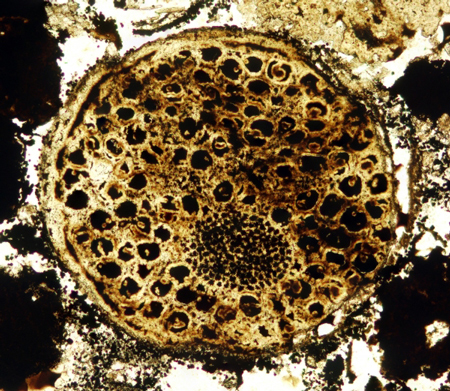New Research Suggests Multicellular Life Started Earlier
Evidence Suggests Multicellular Life 60 Million Years Earlier than Previously Thought
Researchers from the Virginia Tech College of Science in collaboration with counterparts from the Chinese Academy of Sciences have published new data on one of the most fundamental and significant changes that occurred in the history of life on our planet. At some time during the Proterozoic Eon, multicellular life forms evolved. These organisms evolved from single-celled entities and in a paper published in the academic journal “Nature”, the researchers propose that multicellular life forms evolved some sixty million years earlier than previously thought.
Multicellular Life
The team suggest that they have found fossil evidence of complex multicellularity in strata dating from around 600 million years ago, although microscopic fossils are known in Precambrian strata from several locations around the world (Australia, South Africa as well as China), this new research is helping to clarify some long-standing interpretations of micro-fossils.
Professor of Geobiology at the Virginia Tech College of Science, Shuhai Xiao explained the significance of this new fossil discovery:
“This opens up a new door for us to shine some light on the timing and evolutionary steps that were taken by multicellular organisms that would eventually go on to dominate the Earth in a very visible way. Fossils similar to the ones in this study have been interpreted previously as bacteria, single-cell eukaryotes, algae and transitional forms related to modern animals such as sponges, sea anemones, or bilaterally symmetrical animals. This paper lets us put aside some of those interpretations.”
The Origins of Complex Life
It has long been known that simple, multicellular organisms evolved before more complex ones, such as red algae and sponges. If a biological hierarchy existed (and most scientists believe that this is the case), then at some point in the past, single-celled organisms began to evolve into much larger, more complicated multicellular organisms. The trouble is, with the paucity of the fossil record and the difficulties involved in interpreting Ediacaran fauna there is a lot of debate amongst biologists and palaeontologists as to when the solo living cells began to fuse into more cohesive, complex forms.
Evidence of Complex Multicellular Organisms from the Doushantuo Formation
Picture credit: Virginia Tech College of Science
The researchers examined microscopic samples of phosphorite rocks from the Doushantuo Formation in Guizhou Province (south, central China). This formation represents extensive marine sediments that were deposited from around 635 million years ago to around 550 million years ago. They preserve a unique record of microscopic life (Metazoan life – animals) that existed during the Ediacaran geological period, the period in Earth’s history defined as immediately before the Cambrian and that marks the end of the Precambrian or the Proterozoic Eon.
What is an Eukaryote?
The scientists were able to identify a number of three-dimensional multicellular fossils that show signs of cell-to-cell adhesion, cells potentially performing different functions and programmed cell death. These qualities are all found in complex eukaryotes, the organisms that dominate visible life on Earth to day, the fungi, animals and plants. Eukaryotes range in size from single-celled amoebas to giant sequoias and blue whales. We (H. sapiens) belong to the Domain Eukarya. Eukaryote cells are complex, they have a distinct nucleus surrounded by a membrane. The nucleus contains most of the genetic material. The nucleus itself is a specialised area of the cell, it is referred to as an organelle. Eukaryote cells have a number of specialised areas within them (other organelles as well as a nucleus).
Professor Xiao and his colleagues admit that these are not the first multicellular fossils found, nor are they probably the oldest, but the exceptional preservation permits the researchers to draw certain conclusions. For example, it had been previously thought that these multicellular characteristics had started to develop much later in Earth’s history, perhaps as recently as 545 million years ago, a time shortly before the great Cambrian explosion.
What was the Cambrian Explosion?
The Cambrian explosion refers to the period in Earth’s history around 545 to 542 million years ago when there was a sudden burst of evolution as recorded by extensive fossil discoveries. A wide variety of organisms, especially those with hard, mineralised body parts first appear.
This new research may help to shed some light on when multicellularity arose, but the reasons for this significant change remain unclear. The complex multicellularity shown in these Chinese fossils is not consistent with that seen in simpler forms such as bacteria. The scientists note, that whilst some earlier theories can be disregarded these three-dimensional structures can be interpreted in many ways and more research is required to construct the complete life cycle of these ancient organisms.
In summary, these fossils may show some affinity towards the stem-groups that led to the first members of the Kingdoms we know as Animalia, Fungi and Plantae, but much more data is needed to establish a more thorough phylogenetic relationship.


